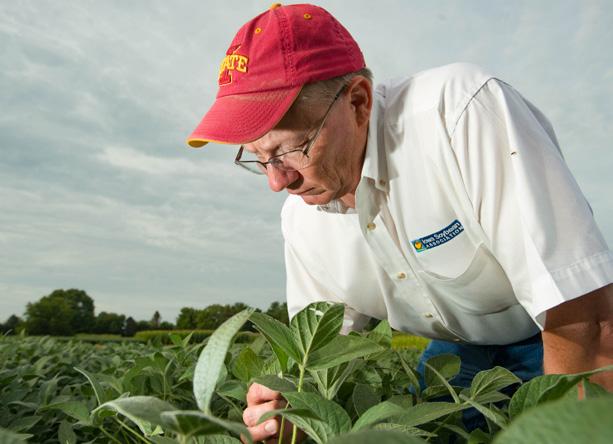
3 minute read
High Hopes for High Oleic
BY BETHANY BARATTA
The soybean industry expects to see a surge in acres of high oleic soybeans within the next few years as food companies and industrial processors pick up on the advantages of using the oil in its products.
High oleic soybean oil was launched commercially in 2012 and approved for global use in December 2017.
Since then, the oil has been a part of everything from snack foods to asphalt.
Consumers enjoy the hearty-healthy qualities of the oil. It’s lower in saturated fat and contains three times the amount of beneficial monounsaturated fatty acids compared to many conventional vegetable oils. The Food and Drug Administration (FDA) says high oleic soybean oil, when used in moderation, can reduce the risk of coronary heart disease when replacing oils higher in saturated fats.
High oleic soybean oil offers food companies increased functionality, including an extended fry life, increased stability and a more-preferred flavor profile over other oil options, according to John Jansen, vice president of oil strategy for the United Soybean Board (USB).
“There’s nothing that rivals its stability and soy flavor,” Jansen says. There are about 550,000 acres of high oleic soybeans grown primarily in 13 states, Jansen says. The USB has set a goal of 16 million acres of high oleic soybeans grown in 2023 and 12 million acres by 2030. Jansen expects production to ramp up as demand for the oil increases through new products.
Industries note high oleic advantages
One such use is through a biobased asphalt, which Iowa State University researchers introduced last fall. High oleic soybean oil was used as a binding agent, replacing other more expensive, highly volatile products. The asphalt has been successful in various demonstrations throughout the country. If the product takes off as expected commercially, the asphalt product would demand 15 tons of soy oil per lane mile.
Biosynthetic Technologies in Indiana recently announced an engine oil derived from high oleic soybean oil. Research is also underway in using high oleic oil in detergents and surfactants. Other companies use high oleic soybean oil to create products like paint and lubricants because of its durability when exposed to high temperatures and high levels of friction, Jansen says. Market-driven demand Growing markets and premiums could help grow the acres of high oleic soybeans raised in Iowa, says Grant Kimberley, director of market development for the Iowa Soybean Association (ISA).
High oleic soybean growers currently receive a premium for growing the crop — anywhere from 40 cents to $1.50 per bushel — depending on whether the crop is conventional or non-GMO. “If we see the boost in demand that’s expected in the next few years, growing high oleic soybeans could become Tom Oswald more attractive to Iowa farmers,” Kimberley says.
Tom Oswald, a past president for ISA and current USB director, says there are other factors to consider before growing high oleic soybeans.
“Farmers need to think about it like growing seed beans,” says Oswald, who farms near Cleghorn. “They need to think about it in terms of contracts, proximity to delivery points and whether those elements have enough value to switch conventional acres to premiumdriven high oleic soybeans.”

Tom Oswald
Photo: Joseph L. Murphy/Iowa Soybean Association
Farmers in Iowa and other states have found success growing high oleic beans, Oswald says. As farmers continue to grow the soybeans, and the full benefits of high oleic soybeans are realized, that will open up the doors for more farmers.
“That broadens the market appeal and opens potentially more delivery points for farmers,” Oswald says.
And when the demand for high oleic soybeans grows and provides greater incentives and benefits to farmers growing them, Oswald says he’ll consider growing high oleic on his farm.
“All applicable value-added opportunities are on my radar,” Oswald says. “It’s important for farmers to have an open mind in thinking about how new developments in market channels might apply to our individual farms.”
Contact Bethany Baratta at bbaratta@iasoybeans.com.










